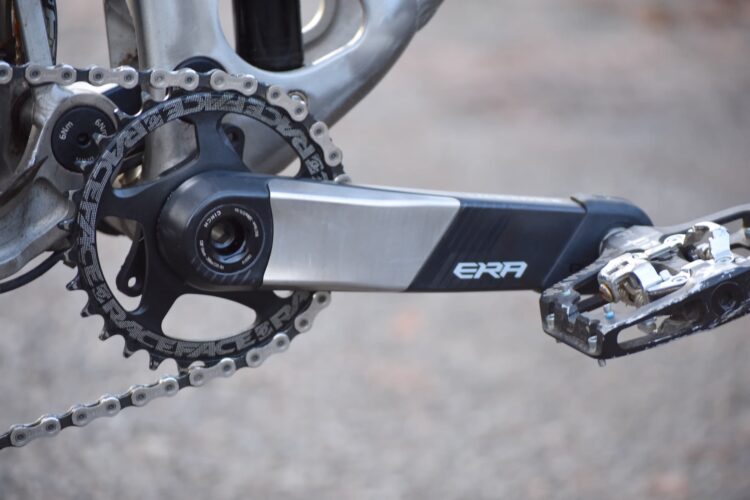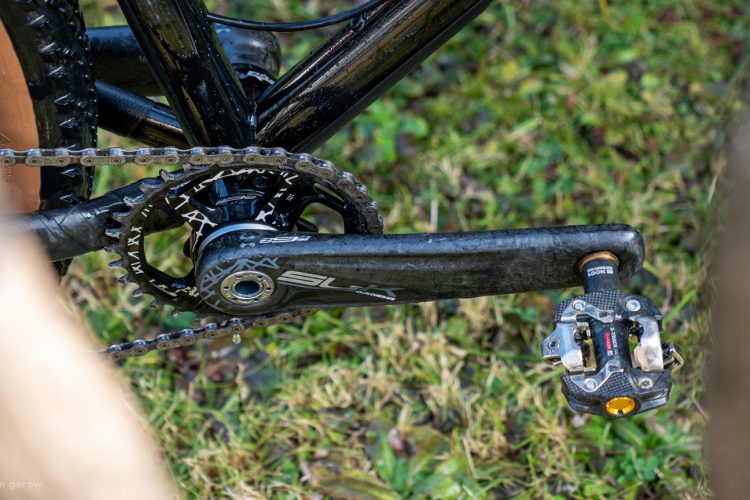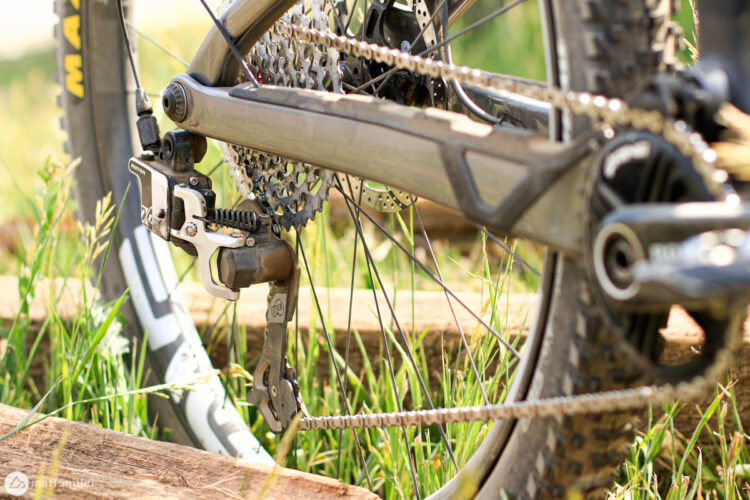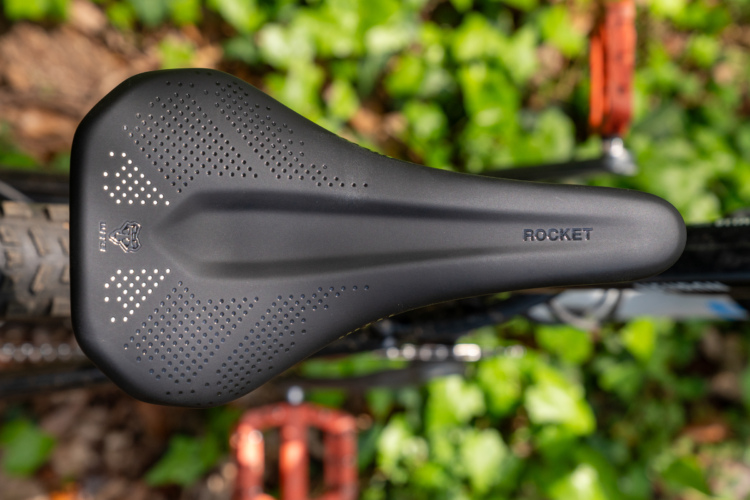
The FSA Gradient mountain bike crankset, first released in 2013, is designed for trail/enduro/downhilll, which is a pretty broad spectrum. This week the brand released the latest Gradient crankset with a new design, and I’ve been testing a set ahead of the launch to see how it performs with a variety of drivetains, from X0 Eagle to GX Transmission, and the new Eagle 90.
FSA Gradient crankset specs
- Hollow bonded construction
- 30mm spindle
- Adjustable chainline without swapping chainrings
- 30t, 32t, 34t, 36t chainrings
- Compatible with all major chain profiles
- 165, 170, 175mm lengths
- 647g as tested with 30t chainring
- Price: $330
- Buy from FSA retailers
The Gradient cranks are at the heart of the new lineup and bring a modern aesthetic to the group. FSA utilized some modern manufacturing techniques to produce the cranks, the most striking of which is the forged, machined and bonded construction. The cranks are two pieces bonded together with a hollow center, making for a lighter, stronger crank.

Details and installation
The Gradient crank looks quite handsome, with a glossy anodized black finish, raw machined aluminum sections to break it up a little, and anodized gray hardware. The crankset uses a 30mm spindle, compatible with the FSA MegaEvo 68/73mm threaded bottom bracket, which uses oversized bearings for better stiffness and reliability. The set is also compatible with PF92, PF30, BB30, and T47 bottom bracket shells.
Gradient cranks are available in 165, 170, and 175mm lengths, and I tested the 165mm size. FSA claims the Gradient crankset weighs 620g; with a 30t chaining, mine weighs 647g.
The Gradient cranks use a proprietary direct mount chaining, which is available in two tooth profiles: Shimano HGX, and everything else. Both are available in 30-36t sizes and are machined from aluminum. The chainline is adjustable by swapping around some included spacers, rather than having to get a new chainring.


Installation is relatively simple, although it took me a little time to determine which spacers I needed and in what order to achieve the correct chainline. The BB bearings are pretty huge, which is reassuring, though it means the cups need an oversized tool that most people are unlikely to already own. The cranks otherwise bolt together like the Race Face Era cranks I tested, but with a 10mm hex bolt to tighten things up. The preload collar on the non-drive side is a nicely machined aluminum affair, which is also confidence inspiring.



Riding The Gradient Cranks
To a certain point, cranks are cranks. If they don’t do anything unexpected, then all is well. The FSA Gradient cranks are within the ballpark expected for an aluminum crank weight-wise, coming in at 21g less than my GX Transmission 170mm cranks. Considering their DH designation, this feels pretty respectable, yet they don’t feel or look out of place on my Specialized Epic 8 Evo build.
In terms of stiffness, I never felt any unwanted flex in the Gradient cranks, which isn’t surprising given that most cranks are pretty solid these days. There were no creaks or other noises for the test period, and for the most part, they just went about their business, and so did I. That said, I haven’t had enough time on them to comment about long-term durability.


Given the trend toward shorter cranks in recent years, I wanted to test a 165mm length instead of my usual 170mm size. I didn’t find a huge difference in cadence, nor did I notice much difference in my fit, though I felt a small increase in my gearing. The main winner for me here is fewer pedal strikes; that extra 5mm gives me a lot more breathing room on technical North Shore climbs. Despite not running crank boots, the ends of the crank arms remain blemish-free, a testament to the extra clearance provided.
The profile of the crank is quite hefty, lending itself to a fairly burly look, great for a DH crank, though I did feel my heel rubbing on the arm on my forward foot a little more than usual. Fortunately it’s not particularly evident in the finish yet. I tested the FSA Gradient crankset with XO Eagle, GX Transmission, and Eagle 90 drivetrains, and never dropped a chain.
I found that the diameter of the pedal recess is too small for some pedal washers to fit, so I wound up running no washers. I prefer to use washers where I can, but it didn’t cause me any issues this time around.

Pros
- Attractive aesthetics
- Decent weight for the given application
- Good chain retention
- Versatile in terms of application and installation
Cons
- Not all pedal washers work
- In-box instructions are not super clear
- Heel rub
Bottom line
The FSA Gradient is a nice crank that feels like a quality offering compared to older FSA cranks, and it looks good to boot. I wouldn’t feel bad about putting these on a trail bike or DH bike alike, and they feel robust enough to go the distance. I’d be pretty happy if they were appointed on a new bike, and they’d make for a nice upgrade to a cheaper-looking OEM crankset. Previously, I’m not sure I would have considered FSA cranks for a custom build, but these would certainly make my shortlist, if the price is right.




















0 Comments